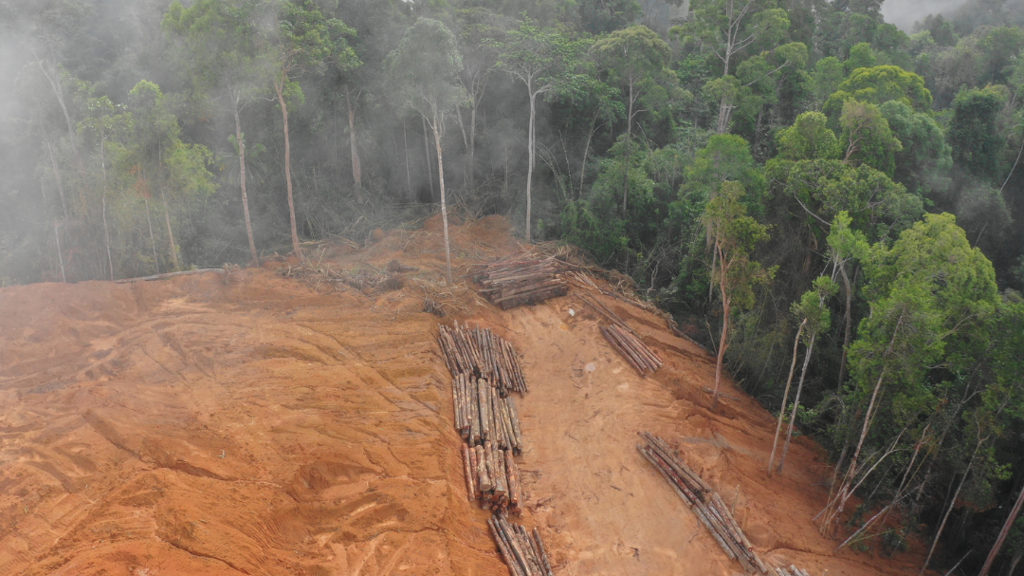

Water, sand, stone, wood, oil - basically almost every raw material on earth is used by humans. Every year, almost 60 billion tonnes of raw materials and resources are extracted. As a result, huge areas of nature are being converted into agricultural land, forests are being cut down, areas are being over-fertilised or grazed too heavily. Biotopes and entire ecosystems have to make way for roads or new housing, while still intact nature often suffers from pollution, for example by plastic.
Today, 75 % of habitats on land and 40 % in water have been seriously altered by humans. Even in Germany, according to the criteria of the IUCN (International Union for Conservation of Nature), only about 0.4 % of the land area is still considered wild and thus completely natural.
Scientific estimates assume that before industrialisation, about 60 % of the earth's land surface was covered with forest. Today, about 150 years later, it is only about half that. And this trend is continuing, because forests are still being cleared 10 times faster than they can grow back.
The main causes of deforestation, as well as the destruction of other ecosystems such as wetlands or grasslands, were and are the extraction of arable land for small farmers and the use of raw materials. But in recent decades, another major factor has been added: industry. Natural areas are being destroyed in Asia, South America and Africa, for example, in order to obtain arable land for soya, palm oil, coffee or bananas, as well as pasture land for the meat industry. Or plantations with fast-growing trees are established, which the paper industry needs. In addition, the exploitation of mineral resources also plays a not inconsiderable role in the destruction of living space.
We humans are not affected by the exploitation of nature as much in the short term as animals or plants, which lose their entire habitat in one fell swoop. In the medium or long term, however, the destruction of ecosystems has a direct impact on our well-being. Not only is climate-damaging CO2 released, but important functions of nature, such as water storage capacity, are also lost.
In addition to our terrestrial ecosystems, marine habitats are also affected by destruction. The sea, habitat for countless animal and plant species, was long considered inexhaustible. Today, things look different: Many seas are now completely overfished and species are threatened with extinction. Moreover, unsustainable fishing methods not only threaten marine life, but also destroy important ecosystems on the seabed.
And it is not only the desire for fish that is causing changes in the marine ecosystem. The sea also offers raw materials such as precious metals, lead, ores, natural gas and oil in abundance. Their extraction leaves immense traces in the ecosystem and often results in its destruction.
More than half of humanity now lives in cities, while the world's population continues to rise. With this, the demand for living space in cities is also growing. New urban areas are being built, often consuming large amounts of land: The total area built with cities has doubled worldwide since 1992, and in Europe the total area of large cities has increased by almost 80 % in the last 70 years. This contributes to increasing flood risk, water scarcity and global warming. In addition to all this, animals and plants are also being deprived of their habitat.
The growth of cities and the sealing that goes with it not only affect nature directly on site, but also ecosystems in the immediate vicinity. Food and water come from the surrounding countryside, where excessive water withdrawals can permanently deprive the water and new cultivation areas have to be created. For example, agricultural crop yields have tripled since 1970 and logging has almost doubled.
To stop the ongoing destruction of habitat, one of the best ways is to establish protected areas. At the 2022 World Conference on Nature in Montreal, Canada, it was decided to convert at least 30 percent of the world's land into protected areas by 2030. This measure is intended to protect the earth's natural diversity and stop the extinction of species.
Sources:
ARDalpha, Utopia, Abenteuer-Regenwald, Greenpeace, nabu , Deutschlandfunk Nova, Europäische Umweltagentur, nabu